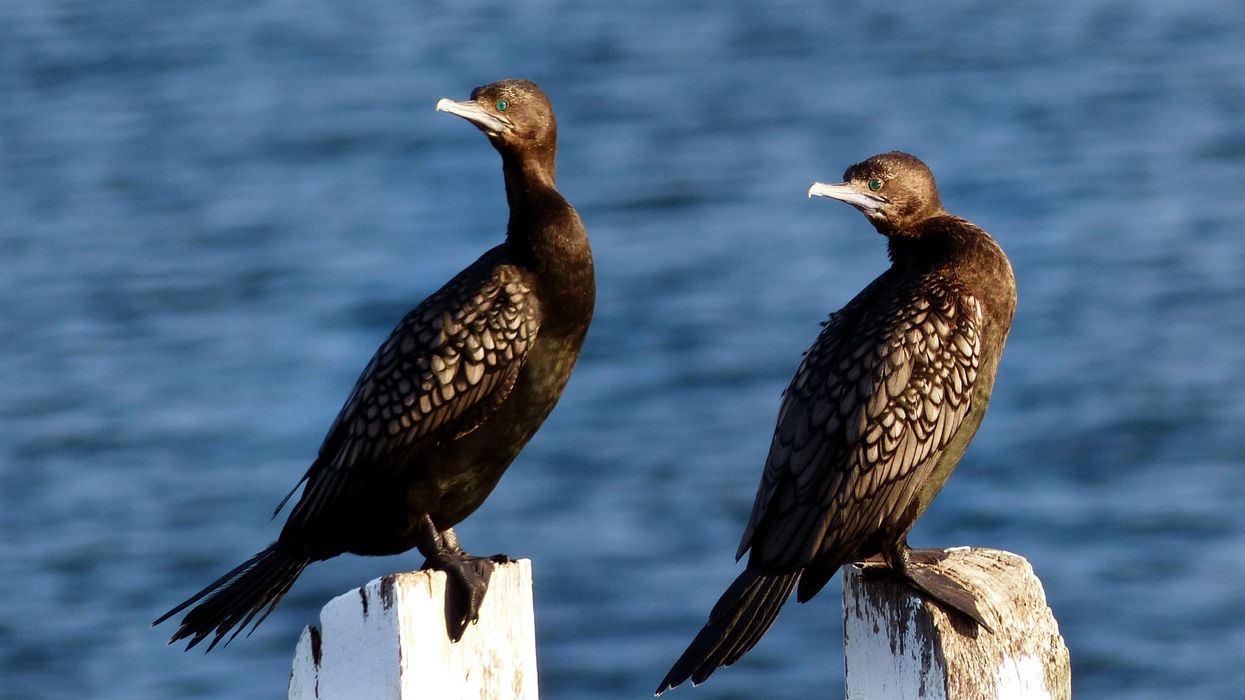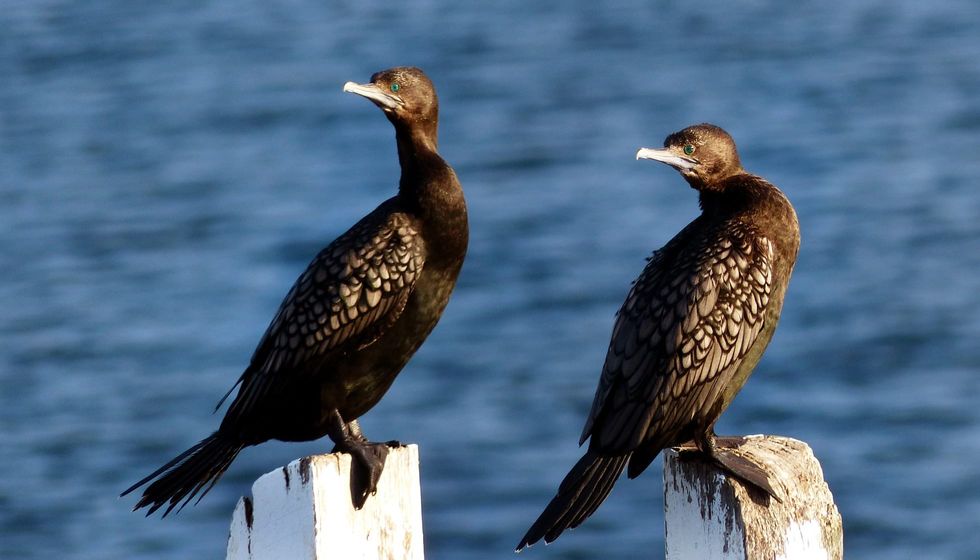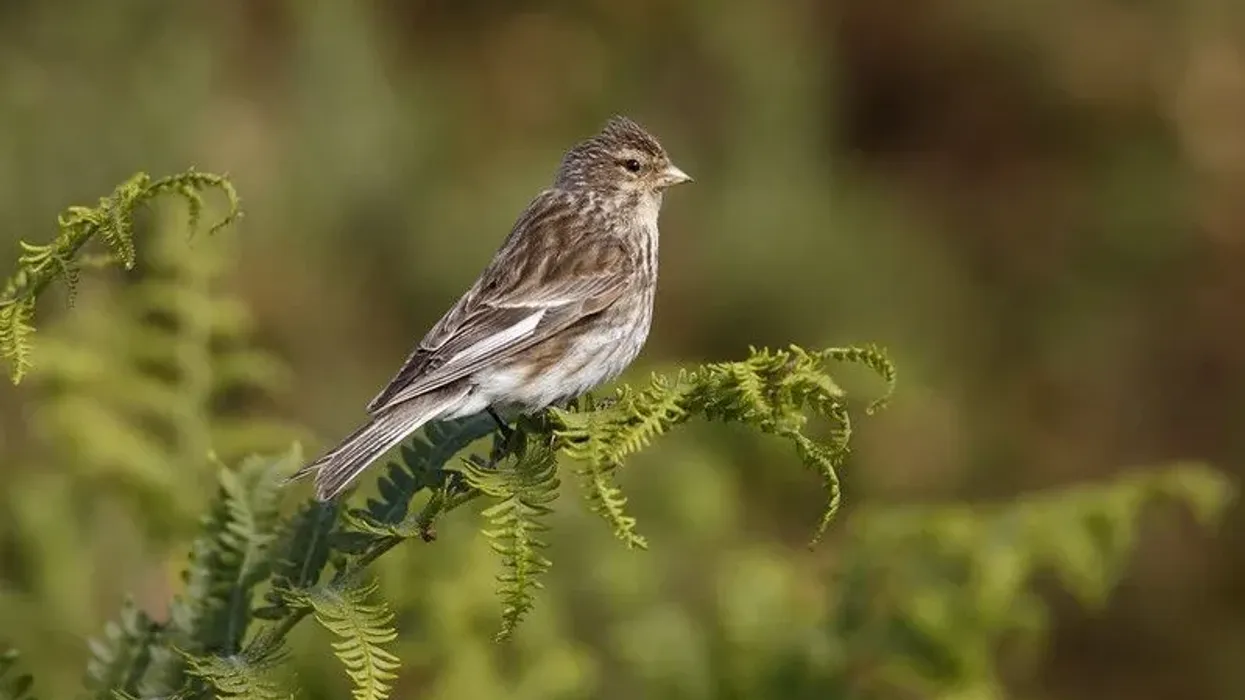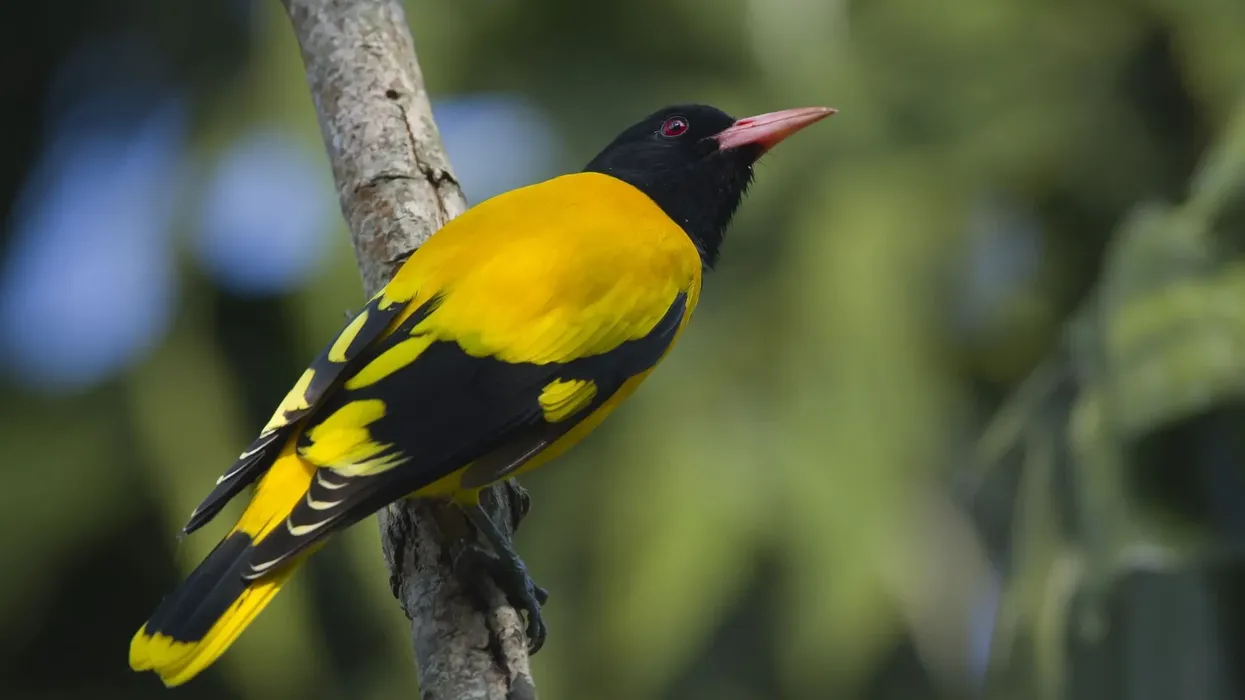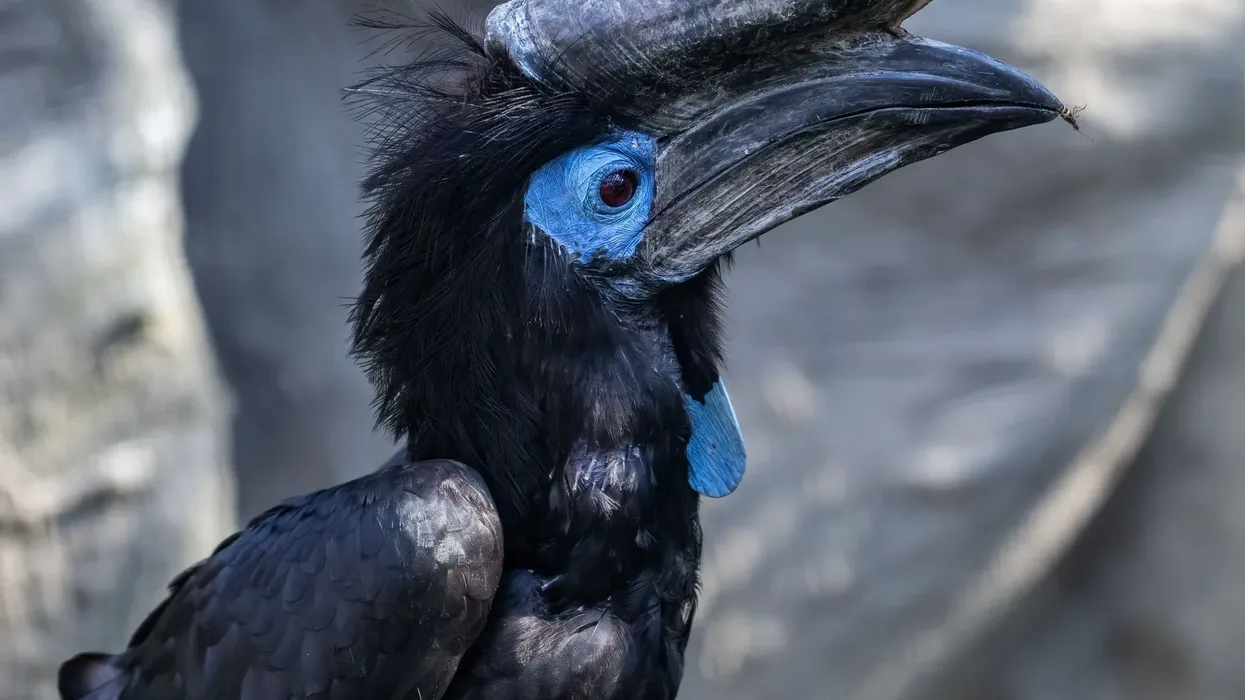The little black cormorant (Phalacrocorax sulcirostris) is a member of the cormorant family and belongs to the genus Phalacrocorax, much like the great cormorant (Phalacrocorax carbo). These birds are characterized by a body that is black throughout.
The feathers of this bird species have a greenish sheen and the eyes are of a beautiful blue-green color. The little black cormorant's head develops a few white spots around the breeding season which is a unique ability.
These birds are an underwater species as they dive into water bodies to catch prey. These birds are mostly found in places such as New Zealand, Australia, and Tasmania where there are a lot of rivers and inland lakes for them to live around.
For more relatable content, check out these sarus crane facts and green heron facts for kids.
Little Black Cormorant Interesting Facts
What type of animal is a little black cormorant?
The little black cormorant or the black shag is a bird that is known as one of the smallest in the family of cormorant birds.
What class of animal does a little black cormorant belong to?
The class of animals that the little black cormorant (Phalacrocorax sulcirostris) belongs to in scientific terms is Aves, but in popular language, the classification is simply under the large umbrella of birds.
How many little black cormorants are there in the world?
We do not know the exact population range or size of little black cormorant birds, however, their conservation status suggests that these birds are fairly common and that their population size is large.
Where does a little black cormorant live?
Little black cormorant birds are found near water bodies such as rivers, reservoirs, inland lakes, mangroves, coastal waters, and marshes since this bird species is known to feed on fishes. They are underwater hunters which means that they catch fish from under the surface of water.
They live near water areas to ensure that their dietary needs are fully satisfied.
What is a little black cormorant's habitat?
The little black cormorant habitat consists of places such as north New Zealand, South Australia, and Tasmania, however, these birds are also found in New Guinea, the Solomon Islands, Borneo, Java, Papua, and Indonesia.
Who do little black cormorants live with?
Black cormorant birds are often and usually found in small flocks. They are known to isolate shoals of fishes as they fly in a flock. When not hunting, these birds use their feet to perch on dead branches of trees and spread out their wings together in order to dry them off.
How long does a little black cormorant live?
While the exact lifespan of the little black cormorant (Phalacrocorax sulcirostris) species is unknown, it is known that the cormorant family (Phalacrocoracidae) and its members such as the great cormorant have an average lifespan of around 25 years.
How do they reproduce?
The breeding season of these birds extends from spring to fall. The little black cormorant female lays around three to six eggs, with six being very rare.
More often, the clutch size is of around three to four eggs. Male and female birds incubate the eggs together. The nest in which the little black cormorant eggs are laid is made up of dried sticks and debris found often in their range of habitat that the distribution of these birds is mostly found in.
The little black cormorant baby is born bald and with a yellow colored bill.
What is their conservation status?
According to the IUCN, the conservation status of the little black cormorant (Phalacrocorax sulcirostris) is Least Concern. This means that the population size of this bird species is fairly stable and there are little to no chances of them facing a risk of extinction in the near future.
The habitat of this bird species is also unlikely to face any rapid degradation.
Little Black Cormorant Fun Facts
What do little black cormorants look like?
The little black cormorant feathers and feet are black throughout with a greenish sheen to them. The eyes are of a beautiful blue-green color, and there can be white patches on the head depending on the proximity of the breeding season.
This species is characterized by its typical hooked bill. A baby little black cormorant, on the other hand, is born bald and has a pale yellow colored bill.
How cute are they?
While their hooked bill and absence of white patches such as in the great cormorant (Phalacrocorax carbo) or little pied cormorant do not make them traditionally beautiful, we can hardly deny that this species has a charm of its own.
Their blue-green eyes and the way they spread their wings when they are not flying is majestic in its own way.
How do they communicate?
The call of a little black cormorant sounds rather rough and harsh. They have short calls of low volume, however, if they are chattering away in small or large flocks, the noise is of a considerably higher volume!
How big is a little black cormorant?
The little black cormorant (Phalacrocorax sulcirostris) has an average length of about 21.6-25.5 in (55-65 cm). This bird species is about half the size of an average frigate bird, and a sea eagle can be thrice the size of our little black bird species.
It is also important to note that the little black cormorant wingspan is around 37.4-41.3 in (95-105 cm), which is nearly twice the length of their body.
How fast can a little black cormorant fly?
The little black cormorant flight speed is not known to us, while we do know that other related species such as the little pied cormorant and great cormorant (Phalacrocorax carbo) are good flyers. Along with the fact they have a large wingspan, this makes us believe that the little black cormorant (Phalacrocorax sulcirostris) also has a considerable flight speed.
How much does a little black cormorant weigh?
The average weight of a little black cormorant bird is around 1.14-2.20 lb (520-1000 g). For better perspective, this bird species weighs at least 10 times as much as a blue jay.
What are the male and female names of the species?
There are no distinct names for the male and female birds of this species and there is hardly any way to tell them apart by the little black cormorant appearance and features. We can call them a male little black cormorant and a female little black cormorant.
What would you call a baby little black cormorant?
The bald and black colored little black cormorant baby will have the same name as all the other juveniles in the class of Aves which is nestling or chick.
What do they eat?
The little black cormorant diet consists mainly of fish and small crustaceans that these birds find near the rivers and marshes that they live around. They can often be seen in flocks around coastal areas where they are either hunting or perching on trees to dry off their wings after a satisfying meal.
Are they dangerous?
There are no records that would suggest that this bird species is dangerous for humans, but there are hardly any fishes that live in the water bodies that see a large distribution of little black cormorant or black shag populations that would say the same!
Would they make a good pet?
It is highly unlikely that a little black cormorant or black shag would be a good bird species to have. The family of cormorants is used to an intense fish-based diet which will be hard to keep up with.
Additionally, it would also be difficult to mimic the habitat that cormorants are used to. While they do look very beautiful with a white head and hooked bill, it is best to appreciate their beauty from afar.
Did you know...
The little black cormorant or black shag species is a member of the cormorant family. Other members include the great cormorant and little pied cormorant. The great cormorant (Phalacrocorax carbo), however, has white colored feathers on the sides of the body which the little black cormorant does not.
The chief food for the little black cormorant is fish. They catch fish by diving into water bodies.
There are no features that would set the little black cormorant male apart from its female counterpart.
Do little black cormorants migrate?
In places such as Australia, Indonesia and north New Zealand, you may be able to witness little black cormorant migration.
How long can cormorants hold their breath?
The family of cormorants are known to be able to hold their breath under water for a staggering 15 minutes to catch their food.
Here at Kidadl, we have carefully created lots of interesting family-friendly animal facts for everyone to discover! Learn more about some other birds from our Australian pelican facts and Andean flamingo facts pages.
You can even occupy yourself at home by coloring in one of our free printable little black cormorant coloring pages.

